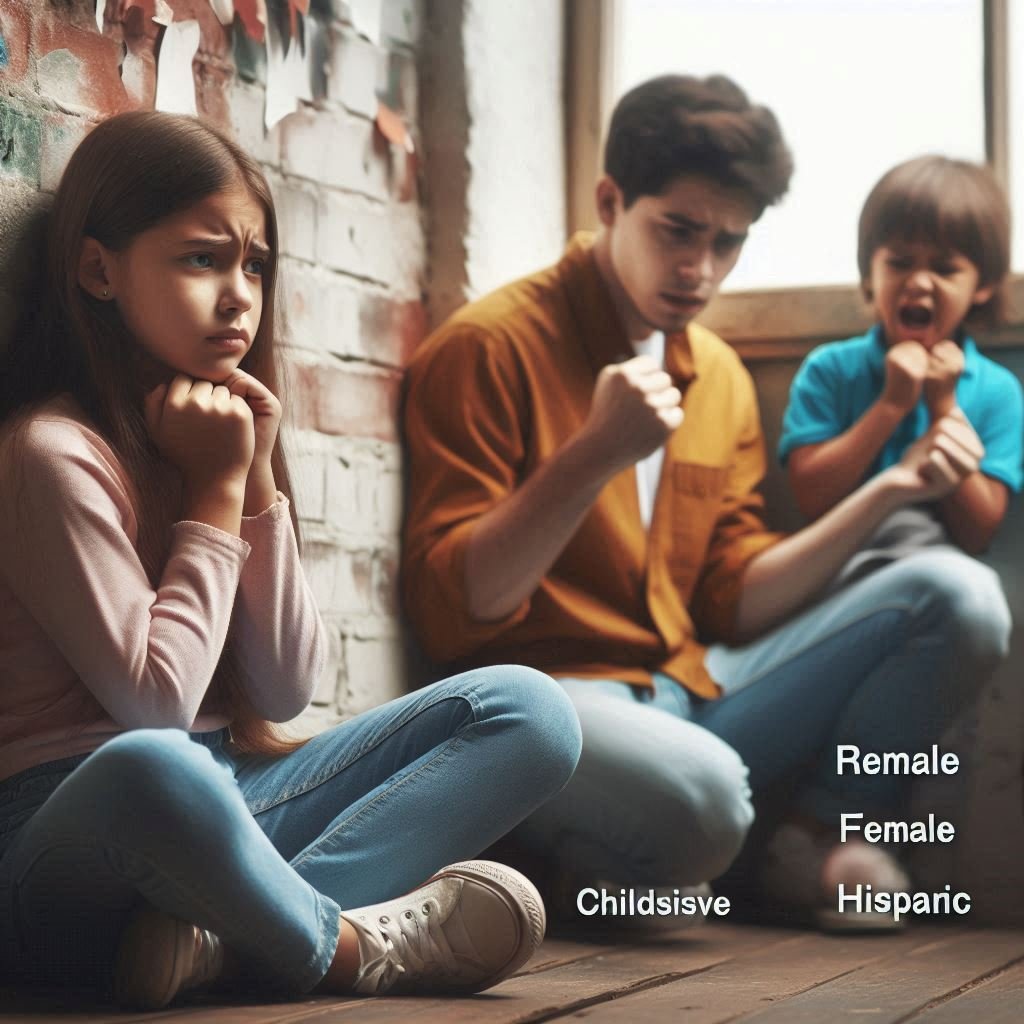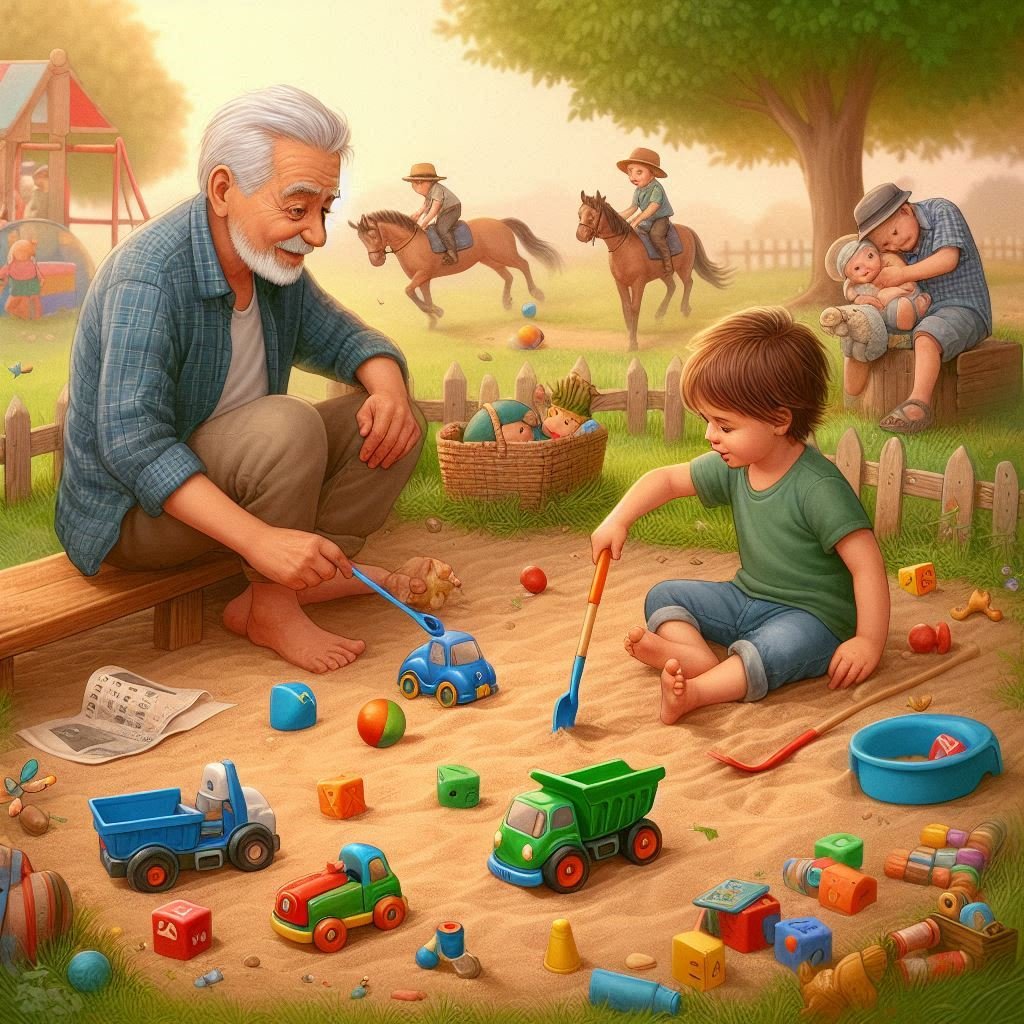Understanding Child Aggression
Child aggression refers to different behaviors shown by young children, especially those around four years old. During this time, kids may act aggressively in various ways, such as hitting, pushing, or biting. They might also express anger through words like yelling or name-calling. It’s important for parents to understand these behaviors, as they can be confusing and worrying.
Common Reasons for Aggression
Research shows that aggressive behavior is common among toddlers. Many kids display some level of aggression as they learn to express their feelings and interact with others. This often happens because they have trouble communicating their needs and managing their emotions. For example, a four-year-old might get frustrated when they can’t say what they want, which can lead to physical or verbal outbursts. These expressions of anger are usually a normal part of growing up.
Navigating Social Situations
At this age, children are also learning to navigate social situations, like sharing, taking turns, and understanding how others feel. This learning can create a mix of emotions, making it a time when aggression might happen more often. Parents should remember that while aggression can be worrying, it is usually a temporary phase. Most children will outgrow these behaviors as they learn better ways to cope and interact with others.
Influences on Aggression
Sometimes, external factors can make aggression worse, such as stress, changes in the family, or being around aggressive behavior. Understanding these influences can help parents support their child during this important developmental stage.
Typical vs. Abnormal Aggression in 4-Year-Olds

Aggression in children, particularly 4-year-olds, is often a natural part of their developmental journey. At this age, children are learning to express their emotions, navigate social interactions, and establish boundaries. Typical aggressive behaviors may include minor hitting, biting, or verbal outbursts, usually arising from frustration or an inability to articulate feelings effectively. These expressions are typically situational and can often be addressed through gentle guidance, reinforcement of positive behavior, and teaching appropriate conflict resolution techniques.
It is crucial for parents to understand the distinction between typical aggression and aggression that can be classified as abnormal. Abnormal aggression may manifest in more severe actions, such as frequent and intense physical outbursts that do not correspond to any apparent triggers, or aggressive behaviors that occur consistently across different settings, indicating a lack of control. Additionally, if a child’s aggression is directed at others in a consistent manner, such as bullying or harming peers without provocation or remorse, this becomes a significant concern.
Moreover, abnormal aggressive behaviors may be compounded by other emotional symptoms, such as withdrawal from social interactions, extreme irritability, or fearfulness, which can signal deeper underlying issues. Parents should be particularly vigilant if the aggression escalates over time or begins to interfere with daily life, including school experiences and familial relationships. It is advisable for parents to consult with child development professionals or pediatricians if they observe persistent abnormal aggression, as early intervention can be key in addressing behavioral challenges effectively.
Common Causes of Aggression in Young Children

Understanding the underlying causes of aggression in 4-year-olds is crucial for parents seeking to address and manage their child’s behavior effectively. At this tender age, children undergo significant emotional development, which can lead to occasional aggressive tendencies. One prevalent factor is frustration; young children often struggle to articulate their feelings and needs. When they are unable to express themselves verbally, they may resort to physical aggression, such as hitting or pushing, as a means to communicate their distress.
The Role of Environment
Environmental influences also play a big part in a child’s behavior. The places they spend time—like home, school, and community—shape how they act. If children see aggressive behavior in movies or from their friends, they may think it’s okay to behave that way. This can lead them to believe that aggression is a good way to solve problems or get attention. Parents should be aware of what their children are watching and the behaviors they are around regularly.
Impact of Family Dynamics
Family dynamics can greatly influence a child’s aggression. Children often copy the actions of their parents or caregivers. If there is a lot of conflict or stress at home, children may respond with aggression. Inconsistent rules or a lack of emotional support can make children feel insecure, which might lead them to act out aggressively to get attention or validation from adults.
Identifying Specific Triggers
In addition to these general causes, certain situations can trigger aggressive behavior. Events that involve jealousy, competition, or threats to their toys can lead to aggressive reactions. As children learn to handle their emotions, it’s important for them to develop healthy coping strategies. Teaching them how to express their feelings in positive ways can help reduce the number of aggressive outbursts they experience.
Tips for Parents
- Encourage Communication: Teach your child to express their feelings with words.
- Model Positive Behavior: Show them how to solve problems calmly and kindly.
- Set Clear Rules: Establish consistent rules about acceptable behavior.
- Monitor Media Exposure: Be mindful of what your child watches and interacts with.
- Teach Coping Skills: Help your child learn ways to manage frustration without aggression.
When to Worry: Red Flags for Parents
Recognizing Aggression in 4-Year-Olds
Understanding child aggression is important for parents, especially when figuring out what behaviors are normal and what might need further attention. It’s common for four-year-olds to show frustration through aggressive actions, but certain signs may mean it’s time to get professional help. Parents should pay attention to how long and how often their child’s aggressive behaviors happen to see if they are typical for their age. For 4-year-old aggression when to worry, it’s crucial to look for patterns that may indicate deeper issues.
Key Warning Signs of Aggressive Behavior
A major red flag is when aggressive behaviors last longer than what is typical for children this age. For example, if a child frequently hits or bites instead of doing it just occasionally, this could be a sign of a bigger issue. Parents should also notice if these aggressive acts become more intense or if the child doesn’t feel sorry after hurting someone. A lack of understanding about how their actions affect others can be concerning. When assessing 5-year-old aggression: when to worry, parents should remain vigilant about these indicators.
Aggression Towards Self, Others, or Objects
Another important concern is when a child’s aggression is aimed at themselves, other people, or belongings. For example, breaking toys or damaging things around the house could mean the child is having trouble handling their feelings. If a child often gets angry or aggressive towards friends or family, it’s essential to check if this happens more often than usual. A pattern of negative behavior that makes it hard for them to connect with others might indicate the need for professional support.
Taking Action for Emotional Health
By being alert to these warning signs, parents can take steps to manage aggression early and support their child’s emotional well-being. Seeking help from child psychologists or behavioral experts when needed can help promote healthier emotional growth and better social skills. Understanding 4-year-old aggression: when to worry and 5-year-old aggression: when to worry can guide parents in making informed decisions about their child’s development.
Strategies to Manage and Reduce Aggression

Managing and reducing aggression in four-year-olds requires a well-rounded approach to help children learn to express their feelings in healthy ways.
Establishing Clear Boundaries
One important strategy is to set clear boundaries. Children do better when they know what is expected of them. By clearly explaining what behavior is okay and what is not, parents can reduce aggressive actions. Consistency is key, so it’s essential to reinforce these rules regularly. Parents can use positive rewards, like praise or special privileges, to encourage good behavior.
Teaching Emotional Expression
Another effective strategy is teaching children how to express their emotions properly. Parents should understand that aggression often comes from feelings of frustration, anger, or sadness. Encouraging kids to use words instead of hitting or pushing is vital. Simple phrases like “I feel angry” or “I’m upset” can help them communicate their feelings. Role-playing different scenarios can also be a fun way for children to practice expressing their emotions in better ways.
Modeling Positive Behavior
Modeling good behavior is also very important. Children watch and imitate adults, so showing calm and positive ways to handle conflicts can teach them how to manage their own feelings. When faced with difficult situations, parents should try to stay calm. This self-control can inspire similar behavior in children.
Recognizing and Reinforcing Good Behavior
It’s essential to notice and reward good behavior too. When children share, play nicely, or express their feelings without aggression, parents should celebrate these actions with praise. This positive reinforcement encourages children to repeat these good behaviors.
Understanding Triggers
Finally, knowing what triggers aggressive behavior can help parents manage their child’s actions better. By creating a supportive environment and being aware of what might lead to aggression, parents can help their children grow emotionally and reduce aggressive behaviors.
Tips for Parents💡
Identify Patterns: Keep track of what triggers aggression to help avoid those situations.
Be Consistent: Stick to the same rules and consequences.
Practice Together: Role-play different ways to express feelings.
Stay Calm: Show how to handle stress in a peaceful way.
Celebrate Successes: Praise your child for using words or sharing.
The Role of Communication in Addressing Aggression

Effective communication is crucial when addressing aggression in four-year-olds. At this developmental stage, children are beginning to articulate their emotions and thoughts, yet they may still struggle with understanding the complex feelings that can lead to aggressive behavior. Open and honest conversations with children can help them navigate these emotions, teaching them healthier ways to express themselves.
One of the first steps parents can take is to create a safe space for their child to share feelings openly. Encourage them to talk about their day, paying attention to moments that made them happy or upset. Use questions such as, “How did that make you feel?” or “What do you think you could do differently next time?” These queries not only foster dialogue but also demonstrate to the child that their feelings are valid and worth discussing. Through this engagement, children learn that aggression is not an acceptable response and discover alternative methods for addressing their frustrations.
Moreover, parents should model empathetic communication by acknowledging their child’s emotions without judgment. For instance, if a child feels frustrated, a parent could say, “It’s okay to feel angry. Let’s find a way to show that feeling without hurting others.” This approach nurtures a deeper understanding of their emotions and encourages them to express themselves positively. Additionally, role-playing scenarios can be a useful technique, allowing children to practice how they might react to frustrating situations. This not only builds their emotional vocabulary but also reinforces appropriate behavioral responses.
Lastly, it’s essential for parents to remain patient and consistent in their communication efforts. Children are likely to repeat patterns over time, and maintaining open lines of dialogue will contribute to their emotional growth and understanding of aggression. Ultimately, by prioritizing communication, parents can guide their children toward developing emotional intelligence and mitigating aggressive tendencies.
Seeking Professional Help: When and How
As parents navigate the complexities of raising a 4-year-old, it is important to understand when to seek professional help for a child’s aggressive behavior. Aggression at this age might manifest as temper tantrums, physical outbursts, or verbal hostility, raising concerns that can be overwhelming for parents. Recognizing the signs indicating the need for professional intervention is a crucial step towards addressing and managing aggression effectively.
If your child’s aggressive behavior is persistent, escalates in severity, or disrupts their ability to function in daily activities such as play or school, consulting with a pediatrician or a child psychologist is advisable. Additionally, if the aggression leads to harm to themselves or others, immediate professional help is necessary. The pediatrician can evaluate the child’s health, ruling out any potential medical concerns while providing tailored recommendations.
During an initial assessment with a psychologist or counselor, parents can expect a comprehensive evaluation. This may involve interviews, questionnaires, and observations aimed at understanding the child’s emotional and behavioral patterns. The goal is to identify underlying issues such as anxiety, developmental disorders, or environmental factors contributing to aggressive actions. Effective communication during these assessments is key; sharing specific examples of aggressive behavior helps professionals in their diagnosis and treatment planning.
Interventions may include behavioral therapy, play therapy, and family counseling to address aggressive behaviors constructively. In some cases, educational resources or parent training programs may be beneficial. These strategies focus on equipping parents with tools to manage aggression while fostering healthier communication within the family. Seeking professional help can be a pivotal move towards not only resolving issues of aggression but also enhancing your child’s overall emotional development and well-being.
Parenting Support: Resources and Communities

Parenting a four-year-old can often be a rewarding yet challenging journey, particularly when navigating behaviors such as aggression. Fortunately, an array of resources exists to assist parents in dealing with child aggression effectively. These resources include books, websites, and local community support groups that foster connections among parents.
Books on child development and behavior can provide valuable insights and strategies for parents grappling with aggressive tendencies in their young children. Titles such as “The Whole-Brain Child” by Daniel J. Siegel and Tina Payne Bryson offer practical advice on managing emotions and behaviors in young kids. Additionally, “No-Drama Discipline” focuses on promoting understanding and emotional intelligence while addressing negative behaviors. These texts not only help parents understand the underlying issues of aggression but also offer constructive techniques to redirect it in healthy ways.
In the digital age, numerous websites provide quick access to expert advice, parenting tips, and forums for support. Websites such as Parenting.com and The Child Mind Institute offer articles and user-friendly resources that target specific issues related to child aggression. Forums and social media platforms also serve as vital tools, allowing parents to connect with others facing similar challenges. Engaging in these online communities can result in shared experiences and solutions, inspiring confidence in navigating difficult scenarios.
Moreover, local community support groups can be immensely beneficial. Many cities host parenting classes or workshops where caregivers can openly discuss their challenges and successes. These gatherings not only provide educational value but also foster friendships among parents, creating a solid support network. Sharing experiences with those who understand the complexities of raising a child can alleviate feelings of isolation and anxiety, ultimately benefitting both parents and their children.
By utilizing these resources and connecting with communities, parents can enhance their skills in addressing child aggression, ensuring a healthier, more positive environment for their children.
Conclusion
Addressing child aggression in four-year-olds requires a comprehensive understanding of the factors contributing to such behaviors. Aggression can stem from various sources, including environmental stressors, emotional challenges, or learned responses. Therefore, it is essential for parents to adopt a balanced approach that combines understanding, patience, and proactive strategies to support their child’s healthy emotional development. Recognizing that aggressive tendencies are a natural part of development can help parents respond effectively without exacerbating the situation.
To foster a nurturing environment, caregivers should create safe spaces for emotional expression, allowing children to articulate their feelings instead of resorting to physical actions. Engaging in open conversations can aid in validating their emotions while also imparting vital skills for managing frustration. Additionally, consistent and positive reinforcement for non-aggressive behaviors can significantly influence a child’s ability to interact peacefully with others.
Furthermore, incorporating techniques such as role-playing and modeling appropriate responses can provide children with tools to handle conflicts more constructively. Proactive strategies, such as setting clear behavioral expectations and establishing routines, help children feel secure and reduce instances of aggression. It is also beneficial for parents to monitor their responses to aggression, ensuring that they model calmness and control, thereby reinforcing the behavior they wish to encourage.
In conclusion, the journey of managing child aggression is multifaceted. A holistic approach that blends understanding with actionable strategies can foster a supportive environment conducive to healthy emotional growth. This balanced perspective not only addresses current aggressive behaviors but also equips children with the skills necessary to navigate future challenges more effectively, fostering resilience and empathy as they continue to grow. By prioritizing these strategies, parents can significantly influence their child’s development in a positive direction.
FAQ on Child Aggression
What is child aggression?
Child aggression refers to various behaviors exhibited by young children, especially those around four years old. This can include physical actions like hitting, pushing, or biting, as well as verbal outbursts such as yelling or name-calling.
Is aggressive behavior common in toddlers?
Yes, research shows that aggressive behavior is quite common among toddlers. Many children display some level of aggression as they learn to express their feelings and interact with others.
Why do young children act aggressively?
Aggression in young children often stems from their limited ability to communicate effectively and manage their emotions. For instance, a child may become frustrated when they can’t express their needs, leading to physical or verbal outbursts.
Is aggression a normal part of child development?
Yes, expressions of anger and frustration are generally considered a normal aspect of child development. Most children will outgrow these behaviors as they mature and learn better coping mechanisms and social skills.
How can parents help their child manage aggression?
Parents can help by teaching their child appropriate ways to express feelings, setting clear boundaries, and modeling positive behavior. Encouraging communication and praising non-aggressive actions are also effective strategies.
Can external factors contribute to aggressive behavior?
Yes, factors such as stress, changes in family dynamics, or exposure to aggressive behavior in their environment can exacerbate aggression in children. Being aware of these influences can help parents support their child better.
How long does aggression typically last in young children?
Aggressive behaviors are usually temporary and tend to decrease as children mature and develop better social skills and coping strategies. However, consistent support from parents can aid in this process.
What should parents do if their child’s aggression seems severe or persistent?
If a child’s aggressive behavior seems severe, persistent, or is causing harm to themselves or others, it may be helpful for parents to seek advice from a pediatrician or child psychologist for additional support.


